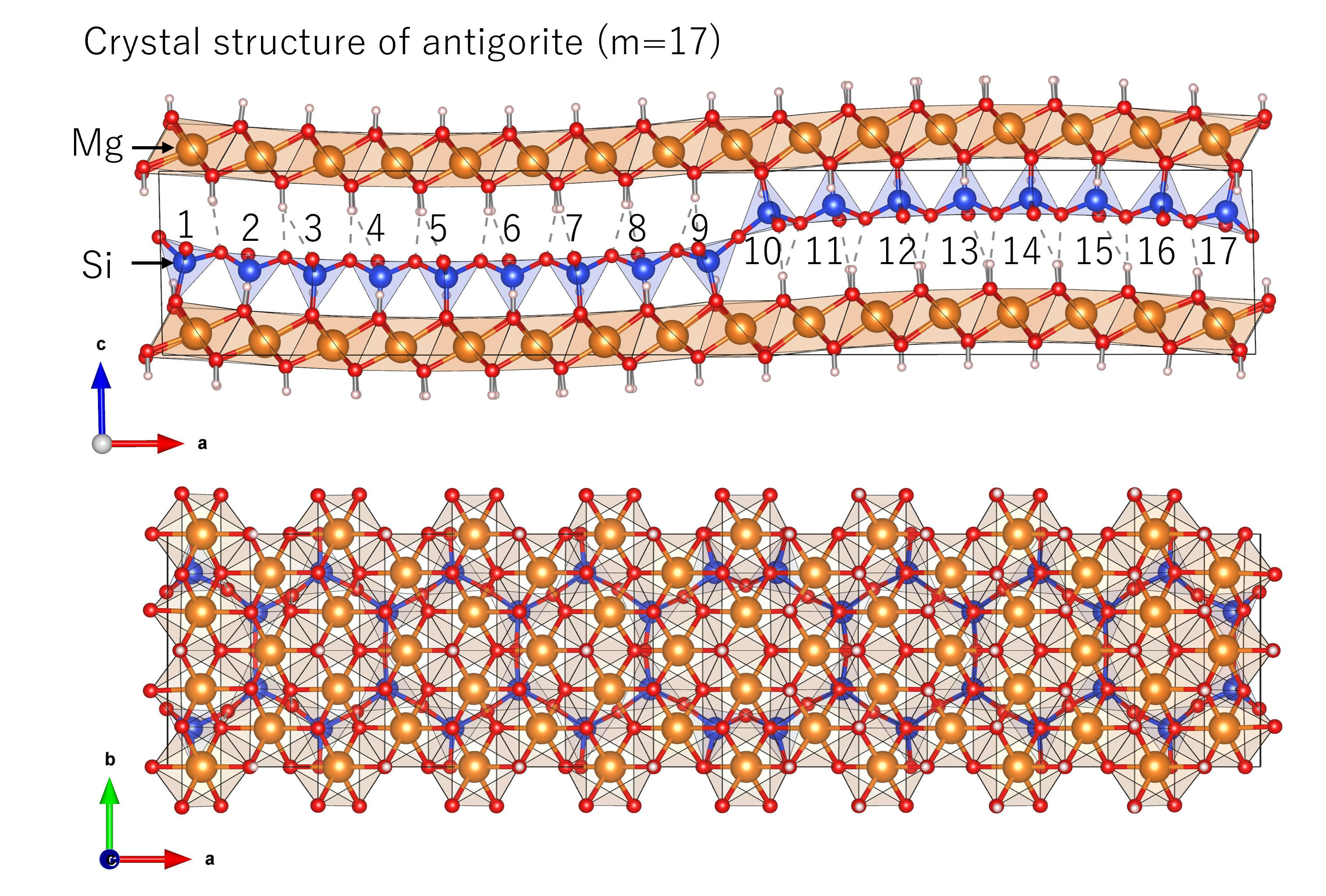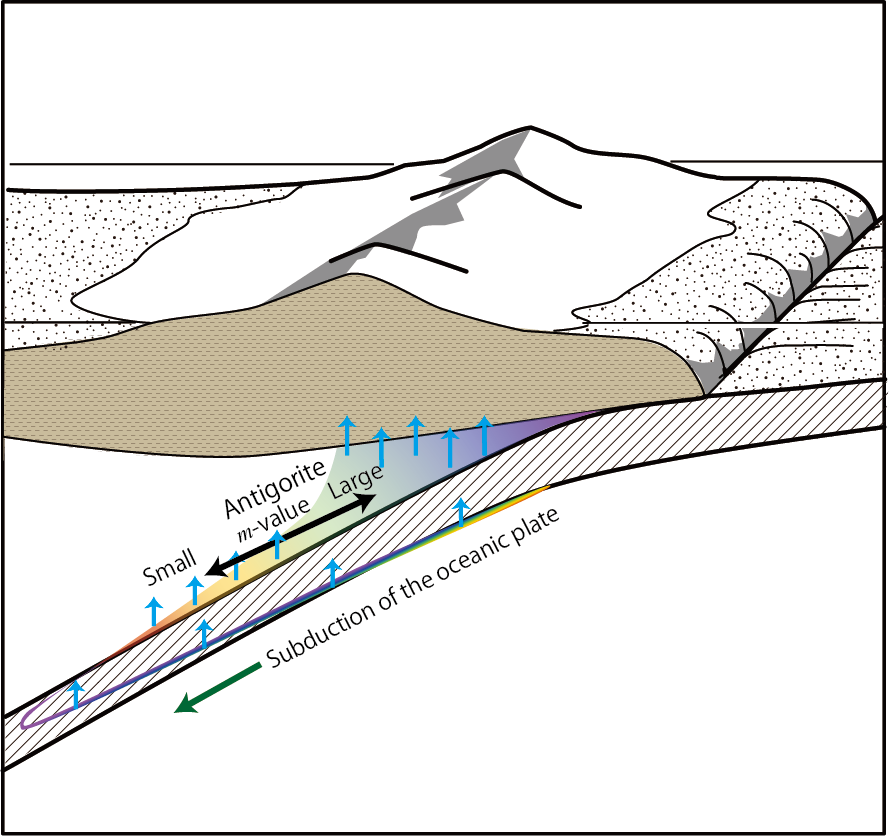First-principles investigations of the polysomatism of antigorite under pressure
In this study, the crystal structure of serpentine (antigorite) was investigated using first-principles calculations under pressure. The results showed that the structure and chemical composition of antigorite changed gradually under high pressure, and it is highly likely that water was released by these structural changes during the subduction process. It was shown that the changes in the modulated structure (polysome) reported in this study may explain the distribution of intermediate-depth earthquakes reported by observations.
Antigorite is a type of serpentine, which is the most abundant hydrated mineral on the Earth. It is widely believed that this mineral is the main carrier of water deep into the Earth in subducting oceanic plates. It has a wavy structure along the a-axis, and in nature, several polysomes with different m-values (m=13-24) have been identified (polysomatism). The m-value is defined as the number of tetrahedra contained in one wavelength, and is controlled by the difference in length between the octahedral layer and the tetrahedral layer (Figure1). This length is mainly determined by the size of the MgO6 octahedra and SiO4 tetrahedra, and is therefore expected to vary as a function of pressure and temperature. However, it is not well understood how the m-value of antigorite changes under the high pressure and temperature conditions in the Earth.
In this study, we used the first-principles method to calculate the free energy (enthalpy) of antigorites with different m-values (m=14-19) under pressure, and compared the stability of antigorites with different m-values. As a result, it was found that the m-value of the most stable antigorite gradually decreases. In other words, antigorite gradually dehydrates as pressure increases, changing into a structure with a shorter wavelength.
This suggests that the structure of antigorite in the oceanic lithosphere may gradually evolve into a polysome with a smaller m-value that differs from the antigorite observed under ambient pressure or near-surface pressure conditions (i.e. m=17) (Figure2). Such changes in m-values are accompanied by minor dehydration reactions. Changes in the amount of water in rocks and minerals due to the polysomatism of antigorite in subduction zones may affect the distribution of intermediate-depth earthquakes, such as those observed in the double seismic zone.
Reference URL: https://doi.org/10.1029/2023JB028060
Bibliographic Information
First‐principles investigations of antigorite polysomatism under pressure,
Jun Tsuchiya, Taiga Mizoguchi, Sayako Inoué and Elizabeth C. Thompson,
Journal of Geophysical Research: Solid Earth, 129, e2023JB028060,
doi:10.1029/2023JB028060, 2024
Fundings
- Japan Society for the Promotion of Science (JSPS) KAKENHI Grant Numbers: JP20K04043, JP20K04126, JP23H01273.
Media
-

(Figure1) Crystal structure of antigorite (m=17)
The crystal structure of antigorite with m=17. The number of tetrahedra within one wavelength along the a-axis represents the m-value. Orange: Mg, Blue: Si, Red: O, Pink: H
credit : Jun Tsuchiya
Usage Restriction : Please get copyright permission -

(Figure2) Change in the m-value of antigorite in subduction zones (schematic illustration)
The present results indicate that the m-value of antigorite tends to decrease under high pressure. Therefore, the decrease in the m-value of antigorite is expected as the depth increases in subduction zones.
credit : Jun Tsuchiya
Usage Restriction : Please get copyright permission
Contact Person
Name : Jun Tsuchiya
Phone : +81-89-927-8152
E-mail : tsuchiya.jun.my@ehime-u.ac.jp
Affiliation : Geodynamics Research Center, Ehime University

